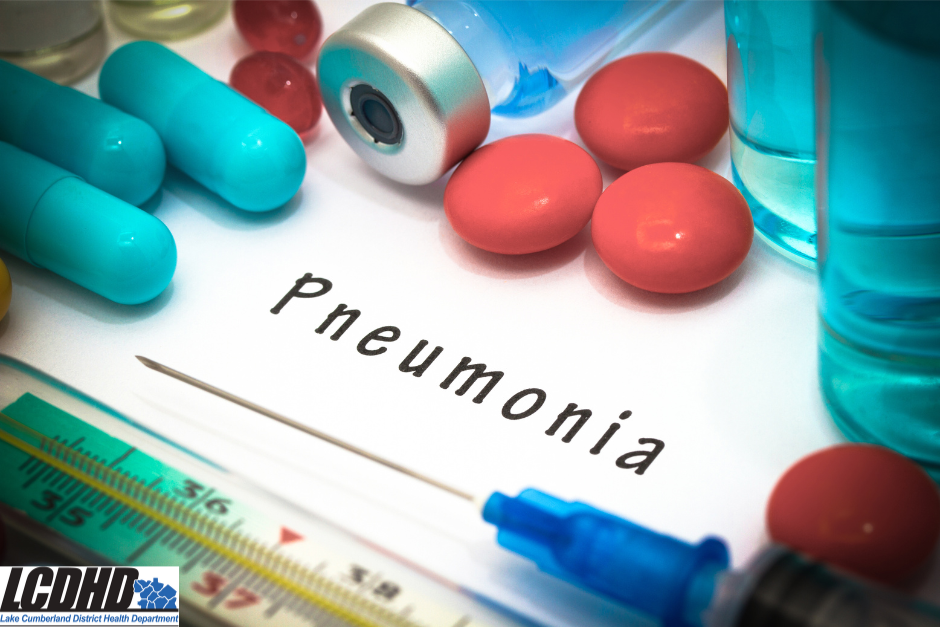Where do we stand now?
Bacterial infections caused by Mycoplasma pneumoniae increased in the United States since late spring and have remained high. The proportion of patients discharged from emergency departments with a diagnosis of M. pneumoniae-associated pneumonia or acute bronchitis has been increasing over the past six months, peaking in late August.
CDC is closely tracking the recent rise in M. pneumoniae infections using various surveillance tools to better understand any differences in demographics, severity of illness, and outcomes as compared to M. pneumoniae infections prior to the COVID-19 pandemic. CDC is also reaching out to healthcare providers and health departments to raise awareness of increasing M. pneumoniae infections and working to monitor for antibiotic resistance.
M. pneumoniae are bacteria that may cause pneumonia
Mycoplasma pneumoniae is a common cause of mild respiratory illness. Since late spring, the number of infections caused by M. pneumoniae has been increasing, especially among young children. This differs from published studies in previous years, when most infections were observed among school-aged children and adolescents.
Mycoplasma is a bacterium that can infect different parts of the body. M. pneumoniae is a type of Mycoplasma that can cause respiratory tract infections. The bacteria can damage the lining of the respiratory tract, including the throat, windpipe, and lungs.
M. pneumoniae infections are generally mild and mostly present as a chest cold but may also present as pneumonia. Symptom onset is typically gradual and can include fever, cough, and a sore throat. When an M. pneumoniae infection progresses to pneumonia, it’s typically a less severe form of bacterial pneumonia commonly referred to as “walking pneumonia.”
M. pneumoniae can cause “walking pneumonia”
Diagnoses increased among all age groups, particularly young children
M. pneumoniae infections are common, with an estimated 2 million infections occurring each year in the United States. However, the true number of people affected every year is unknown as there’s no national reporting or dedicated surveillance system to track these infections. M. pneumoniae infections may occur more often in summer and early fall.
In 2023, M. pneumoniae began to re-emerge globally, after a prolonged period of low incidence of infections since the start of the COVID-19 pandemic. CDC routinely monitors emergency department care of people with pneumonia and other respiratory diseases. So far in 2024, CDC has seen an increase in the percentage of pneumonia-associated emergency department visits with a discharge diagnosis of M. pneumoniae.
The M. pneumoniae discharge diagnosis data from March 31 through October 5, 2024, show an increase among all age groups across the United States, peaking in August, and remaining high. The increase, however, was highest among children. The percentage grew from 1.0% to 7.2% among children ages 2–4 years and from 3.6% to 7.4% among children ages 5–17 years in that time frame. The increase in children ages 2–4 years is notable because M. pneumoniae historically hasn’t been recognized as a leading cause of pneumonia in this age group.
CDC is also able to look at data showing how frequently patients are testing positive for M. pneumoniae (i.e., test positivity). These data show that test positivity for M. pneumoniae has also gone up since late spring for all age groups, from 0.7% to 3.3%. These data come from lab testing results reported to the bioMérieux BIOFIRE® Syndromic Trends program, which tracks pathogen circulation trends using lab data from across the United States.
M. pneumoniae spread through respiratory droplets
M. pneumoniae bacteria are spread by inhaling respiratory droplets produced when an infected person coughs or sneezes. Other people can get infected if they breathe in those droplets. Strategies that prevent respiratory viruses, such as handwashing and covering coughs and sneezes, also prevent these bacteria from spreading.
Outbreaks occur mostly in crowded environments such as schools, college residence halls, and nursing homes. Outbreaks can be prolonged due to:
- the long incubation period of M. pneumoniae, which is between one and four weeks;
- the ability of the bacteria to persist in the respiratory tract for several months; and
- the prolonged presence of symptoms such as coughing.
Most people who spend a short amount of time with someone who is sick with M. pneumoniae don’t get infected. However, people who spend a lot of time with someone who is sick with M. pneumoniae are at increased risk.
Some people are more likely to get infected than others. For example, people recovering from respiratory illness and those with a weakened immune system are at increased risk for serious infection.
There are a few ways to diagnose M. pneumoniae infections
Testing for M. pneumoniae infection most often occurs in emergency department or hospital settings. Less commonly, testing may be performed in outpatient settings or clinics. To test for M. pneumoniae, healthcare providers collect a specimen, often a swab from the nose or throat or, less commonly, a blood sample.
M. pneumoniae testing typically occurs as part of a respiratory panel that tests for many pathogens, including flu, respiratory syncytial virus, COVID-19, and other viruses and bacteria. Healthcare providers also often examine the patient physically and look for signs of respiratory illness. If clinically indicated, they may order a chest X-ray to see if the patient has pneumonia.
Treatment with antibiotics could help people who develop pneumonia
Most people with a mild M. pneumoniae infection will recover on their own without medicine. Over-the-counter medicines can help you feel better while you’re recovering.
Healthcare providers can use several types of antibiotics to treat people with pneumonia caused by M. pneumoniae. M. pneumoniae bacteria are naturally resistant to certain antibiotics (e.g., beta-lactams such as amoxicillin) that are commonly used to treat other kinds of bacterial pneumonia. Macrolides (e.g., azithromycin) are the first-line antibiotic treatment for M. pneumoniae infection. Macrolide-resistant M. pneumoniae remains relatively uncommon in the United States.
Accurately identifying M. pneumoniae infections and appropriately treating people who may be infected is complicated by unique challenges, including:
- Symptoms of M. pneumoniae infection are often similar to diseases caused by other respiratory pathogens;
- Prolonged absence of diagnosed M. pneumoniae infections during the COVID-19 pandemic; and
- Limited availability or use of diagnostic methods in some settings.
Recommendations from CDC
For clinicians and public health practitioners
- Ensure that healthcare providers are aware of increasing M. pneumoniae infections.
- Consider M. pneumoniae as a possible cause of infection among children hospitalized with community-acquired pneumonia.
- Have increased suspicion of M. pneumoniae among patients with community-acquired pneumonia who aren’t clinically improving on antibiotics that are known to be ineffective against M. pneumoniae, such as beta-lactams.
- Perform laboratory testing when M. pneumoniae infection is suspected, especially among hospitalized children, to ensure appropriate antibiotic therapy is administered.
- Consider swabbing both the throat and the nasopharynx to improve the likelihood of detection in respiratory swab specimens.
- Consider using a second-line antibiotic regimen, such as fluoroquinolones or tetracyclines, to treat patients with suspected or confirmed M. pneumoniae infection who aren’t improving on macrolides.
- Consider potential adverse effects in children or pregnant people when using fluoroquinolones or tetracyclines.
- Promote the judicious use of antibiotics and minimize the risk of antibiotic resistance by not prescribing antibiotics unless indicated by clinical and/or laboratory evidence.
- Promote CDC recommendations for core prevention strategies to prevent respiratory illness, including practicing good hand hygiene and covering coughs and sneezes.
For the public
- Learn about M. pneumoniae symptoms such as fever, headache, and a slowly worsening cough. Stay aware of who might be at higher risk of severe disease, including people with asthma or reactive airway disease.
- Protect yourself and others by following core prevention strategies to prevent spread of M. pneumoniae and other respiratory germs.
- Seek medical care if you or your child has persistent or worsening symptoms of possible M. pneumoniae infection, such as wheezing or difficulty breathing, especially if you or they might be at higher risk of developing severe disease.



